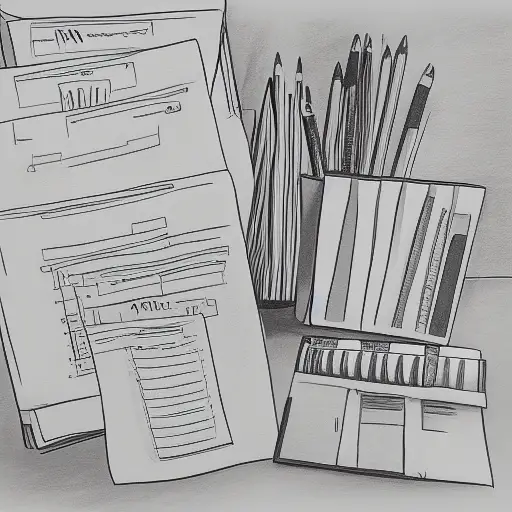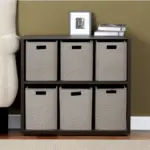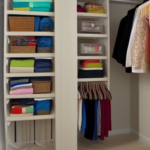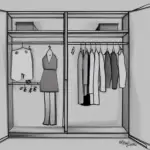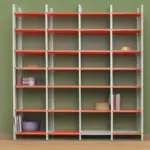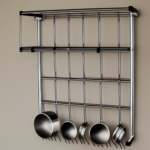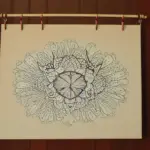When it comes to organizing documents at home, there are several things to consider. You can use filing cabinets, magazine holders, and color coding to ensure that your documents stay in order. However, you must be careful not to overwhelm yourself with too many options. Keep in mind that a system isn’t an actual system if you don’t keep everything in one location.
Color coding
Color coding is a great tool for keeping your workspace organized. Not only can you color-code your documents at home, but you can also use a variety of different colors to separate different parts of your workspace. This method can make it easier to focus on tasks and remember where you put certain things.
It’s also a great way to make sure that you don’t misplace anything. Organizing paper files by colour can help you avoid losing important papers, and it helps you identify groups of documents. You can also easily find what you need without wasting time searching through a pile of papers.
When working at home, color-coding documents can save you time and avoid frustration when you don’t have the right materials to complete a task. For example, you can color-code your calendar or notes to distinguish certain tasks or events. If you’re working on a project that involves many different files and folders, you can color-code your notes according to their content.
Color-coding is one of the most popular organizational methods. It simplifies your life and empowers you to do better work. Anyone can use it to streamline and clarify their daily routines. Just follow some basic guidelines and you’ll be on your way to better organization. You’ll never go wrong with color-coding.
Colour-coding is also popular in primary school classrooms. This system can make notes and handouts easier to locate, and can help students with executive function and planning. Color-coding is also useful for instructors who teach several different sections of a class. It helps them manage the classes without the “I forgot” gap.
Another great benefit of color-coding files at home is that you can overlay extra information and speed up the filing process. For example, if you’re filing documents by date, you can easily find them by color-coding them. By color-coding your files, you can easily identify which documents are which aren’t.
Filing cabinets
Filing cabinets for organizing documents at home can be customized to meet your individual needs. These systems don’t have to be as elaborate as those used in businesses. They can be organized by room, by family member, by priority, or even by frequency of use. In addition, they are a great option for storing a wide variety of items.
One of the most important features of a filing cabinet is safety. It must be safe for people to use it, and there are certain standards that must be met by the manufacturer. In the UK, this means meeting the BS 4438:1969 safety standard. The EN 14073-2:2004 harmonised standard is endorsed by the relevant standards agency (such as DIN in Germany). AS 5079 is a modified version of the ANSI BIFMA X5.2-1997 standard.
File names should accurately describe the contents of the files. While creatively naming the files may seem fun in the moment, this can cause confusion in the future. Also, the name should match the type of document in the file. This way, you’ll be able to quickly identify the contents of each file even without opening it.
Choosing the right filing cabinet for your needs depends on your needs and preferences. If you file frequently, the best location is close to the workspace. Alternatively, if you have a long-term storage system, you may prefer to keep some files in a cabinet further away from your workspace.
When choosing a filing cabinet for your home, it is important to keep in mind the size of your home. Choose a cabinet that is large enough for the space you need to keep the documents, otherwise, you may find yourself collecting unnecessary papers. If you keep your papers in a smaller size, you are more likely to keep only those papers that are important to you.
If you want to keep your documents safe and secure, choosing a home-made filing cabinet is a great option. They can be functional and stylish.
Magazine holders
A good magazine file holder makes organizing your documents easy. They are inexpensive, and are available at most stores. Look for one in the office supplies section. Magazine files are also useful for organizing your groceries and clutch bags. You can even store your water bottles in them to keep them from tipping over.
Another great feature of magazine file holders is their durability. You can store important documents and supplies in them, and they will not get damaged by dust, dirt, or other issues. They come in a variety of styles, and can be purchased online. You can choose a stylish magazine file holder to match your decor.
Magazine holders also make great book holders. Not only can they store magazines, but they can also be used to store coloring books, activity books, and drawing paper. A wooden magazine holder can serve as a mail sorting station, too. Adding a wooden magazine holder to your home organization will add a touch of sophistication to your decor.
Airspace
When it comes to organizing documents at home, there are many different ways to go about it. Wire files and magazine holders are two of my favorite options. They keep important papers on display and can be labeled for quick access. You can also use wall space to create a message center or to store important papers, such as your family’s schedule. Magnetic boards, cork boards, and dry-erase boards can also keep important papers visible and easily accessible.

